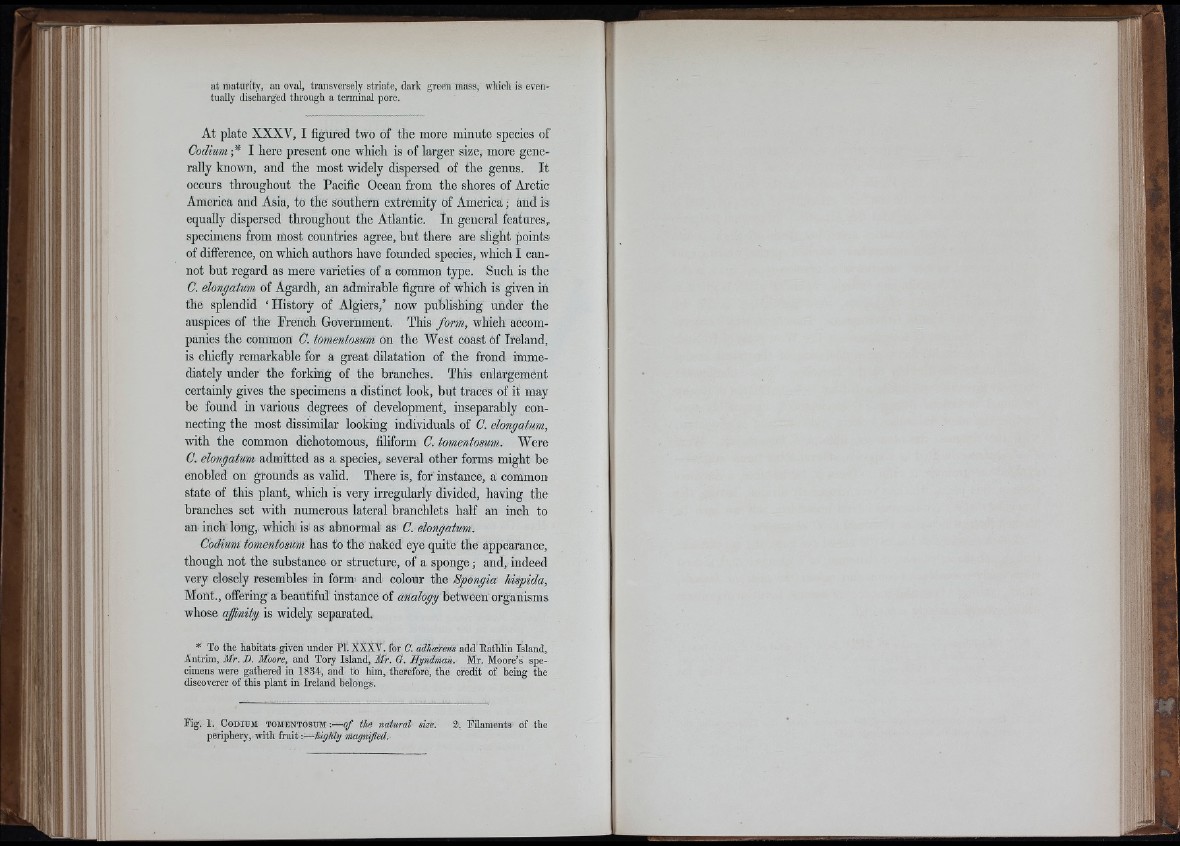
B'" ; at maturity, an oval, transversely striate, dark green mass, which is eventually
discharged through a terminal pore.
Ii' ■
III. ' . ■ '
' À 1
iltoto (
At plate XXXV, I figured two of the more minute species of
Codium ;* I here present one which is of larger size, more generally
known, and the most widely dispersed of the genus. It
occurs throughout the Pacific Ocean from the shores of Arctic
America and Asia, to the southern extremity of America ; and is
equally dispersed throughout the Atlantic. In general features,,
specimens from most countries agree, but there are slight points-
of difference, on which authors have founded species, which I cannot
but regard as mere varieties of a common type. Such is the
C. elongatum of Agardh, an admirable figm-e of which is given in
the splendid ‘History of Algiers,’ now publishing under the
auspices of the French Government. This form, which accompanies
the common C. tomentosum on the West coast of Ireland,
is chiefly remarkable for a great dilatation of the frond immediately
under the forking of the branches. This enlargement
certainly gives the specimens a distinct look, but traces of it may
be found in various degrees of development, inseparably connecting
the most dissimilar looking individuals of C. elongatum,
with the common dichotomous, filiform C. tomentosum. Were
C. elongatum admitted as a species, several other forms might be
enobled on grounds as vahd. There is, for instance, a common
state of this plant, which is very irregularly divided, having the
branches set with numerous lateral branchlets half an inch to
an inch long, which is as abnormal as C. elongatum.
Codium tomenfosim has to the naked eye quite the appearance,
though not the substance or structure, of a sponge ; and, indeed
very closely resembles in form and colour the Spongia hispida,
Mont., offering a beautiful instance of analogy between organisms
whose affinity is widely separated.
b l :
■j
■ ! 'I' !
* To the babitats given under PI. XXXV. for C. adlcerens add EatUin Island,
Antrim, Mr. D. Moore, and Tory Island, Mr. G. Hyndman. Mr. Moore’s specimens
were gathered in 1834, and to him, therefore, the credit of being the
discoverer of this plant in Ireland belongs.
F i g . l . C o d iu m t o m e n t o s u m :— o f the natural size.
periphery, ivith f ru it:— highly magnified.
2. Füaments of the
lr
i I